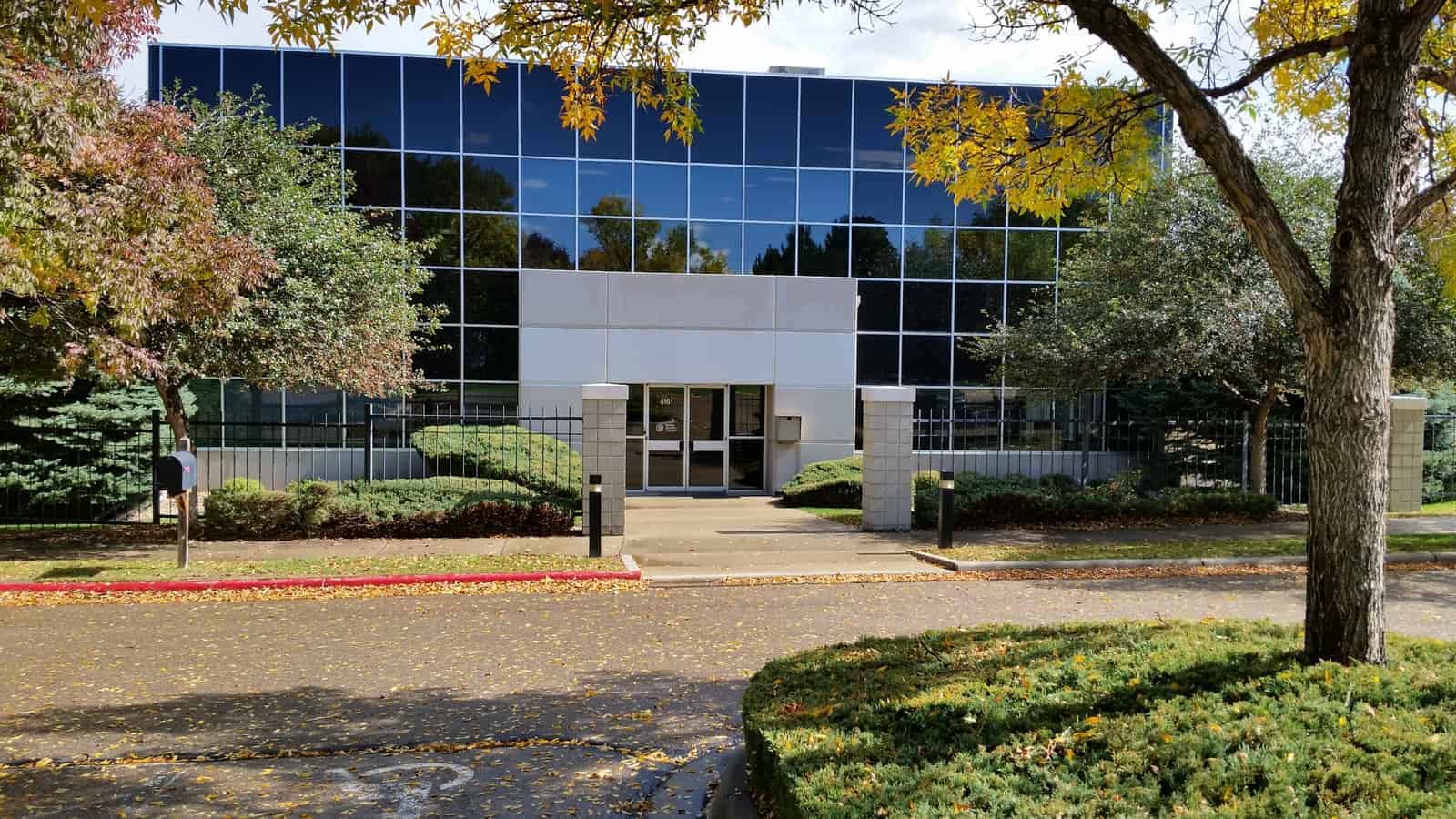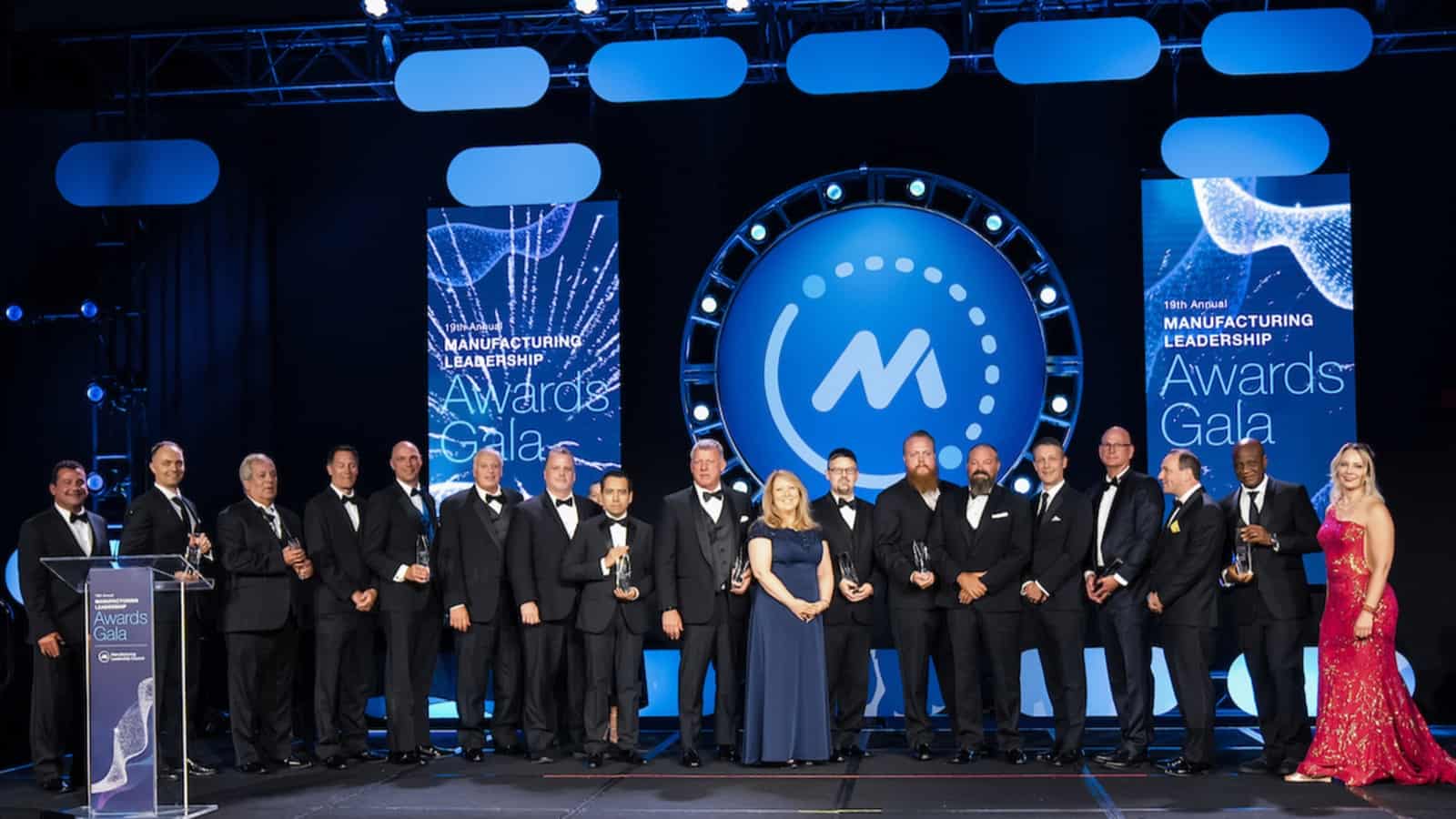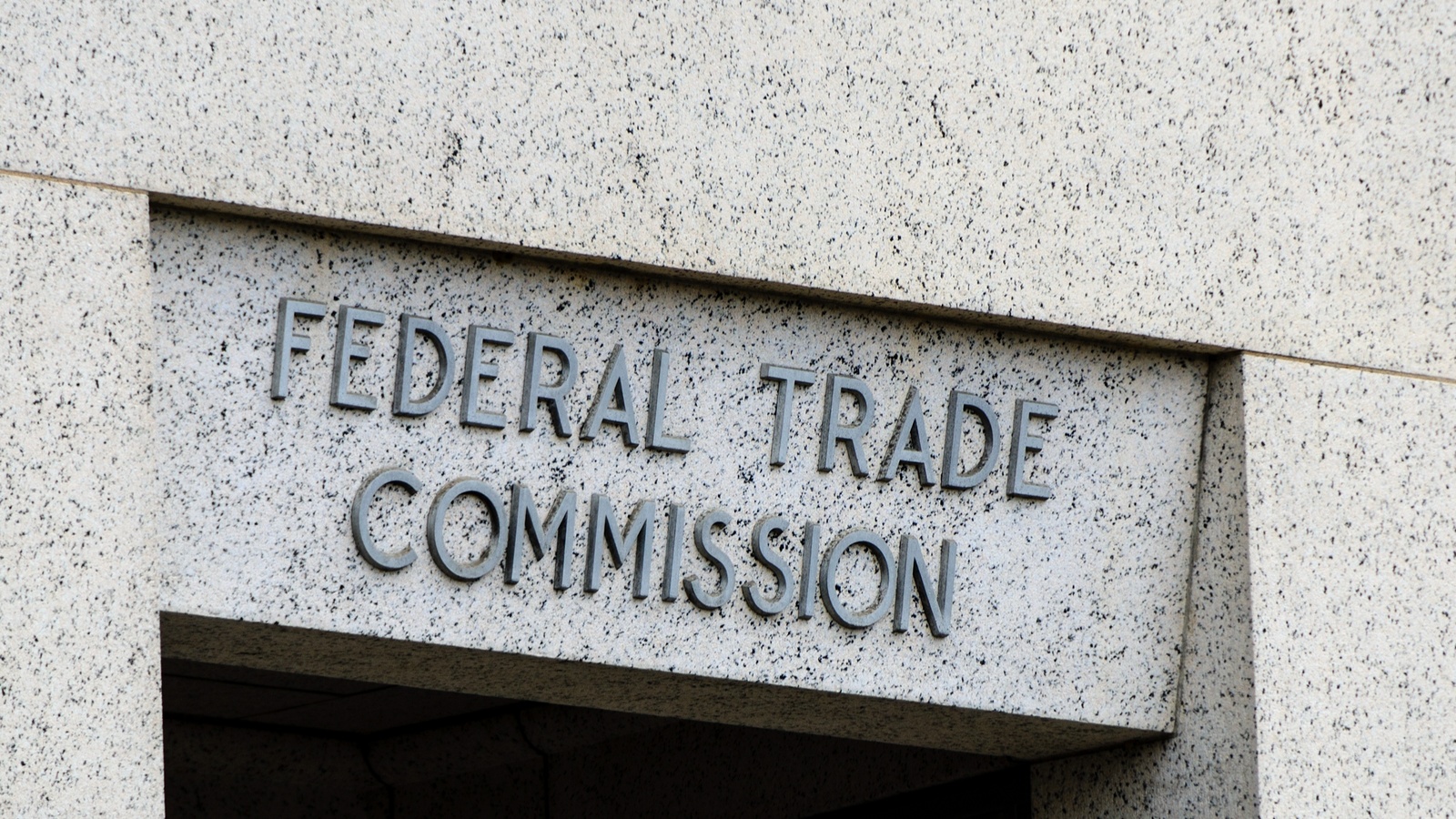How Quantum Computing Can Combat “Forever Chemicals”

What sort of computer can evaluate 67 million potential solutions in 13 seconds? Only a quantum computer. But what sort of problem has 67 million solutions to begin with?
Many manufacturing challenges do, from optimizing supply chain logistics to finding the most efficient way to load millions of pallets. In recent years, another mind-bendingly complex problem has begun to occupy the industry: how to get potentially dangerous chemicals in a category known as PFAS out of use and out of our environment.
Quantum computing firm D-Wave says that quantum holds the key, as its massive computing power could find new ways to remove or remediate the chemicals, or even help identify which of the thousands of chemicals in this class are indeed dangerous. We recently spoke to D-Wave Global Government Relations and Public Affairs Leader Allison Schwartz to get the details.
How it works: As Schwartz explains it, quantum is “a completely different form of computing.”
- “Due to superpositioning and quantum entanglement, quantum can look at all possibilities at once and come back with an answer very quickly,” she added.
- However, some of the best solutions are a product of both classic computers and quantum, an option known as “hybrid” applications. For example, Davidson Technologies collaborated with D-Wave to create a hybrid solution that produced the aforementioned 67 million scenarios in 13 seconds.
- “Classical computing alone can’t do that,” Schwartz observed.
When quantum meets PFAS: So how does this help with PFAS? Schwartz told us that there are two different types of quantum computing that would prove useful.
- The first, annealing quantum computing systems, are superior at providing optimized solutions. These systems can quickly run through millions of scenarios that model potential chemical spills, methods of remediating the chemicals, techniques for removing them from operations entirely and much more. These systems are commercially available today through the cloud.
- Meanwhile, gate model systems offer another avenue for dealing with PFAS—they can potentially invent alternative molecules that could substitute for the dangerous chemicals. However, gate-model systems are not large enough yet to tackle real-world problems.
Doing the research: Quantum could also play a role in determining which chemicals are harmful in the first place, added Schwartz. There are thousands of PFAS chemicals out there, but so far, only a few hundred have been studied.
- To examine the effects of various chemicals, researchers and companies will have to undertake clinical trials. Quantum can help optimize the organization of those trials, as well as aid in analyzing the results—for example, by assisting with medical imaging reconstruction .
Read the whole story here.
Creators Wanted Tour Culminates at Pumpkin Show

The Creators Wanted campaign—an initiative of the NAM and the Manufacturing Institute aimed at driving excitement about modern manufacturing careers—is concluding the wildly successful run of its immersive experience with a significant finale at the Circleville Pumpkin Show, one of the largest annual festivals in the country.
By the numbers: Since it began last year, Creators Wanted has created quite a stir.
- More than 13,000 students, educators and community leaders have engaged with the tour directly.
- Online, 1.5 million students and mentors have signed up to explore modern manufacturing careers.
- A whopping 84% of tour participants now view manufacturing careers more positively.
- Positive industry perception among parents has jumped nationwide from 27% to 40%, thanks in part to the tour and associated MI programs.
Watch a recap of the tour featuring the voices of students, educators and parents who share their perspective on the tour’s impact.
Next week: From Oct. 17–21, half a million attendees, including families and students, will have a chance to experience the tour’s immersive setup, a featured event at this year’s show.
- Manufacturing team members from the Honda and LG Energy Solution joint venture (the tour stop’s sponsor) will be present, offering insights into modern manufacturing careers.
- The Creators Wanted online training program and jobs resource will be showcased, and the tour will engage with local schools, particularly STEM students, amplifying the opportunities in manufacturing.
The big picture: With industries vying for the best talent amid continued labor challenges, initiatives like the Creators Wanted Tour play an essential role in reshaping public perceptions and attracting the next generation into manufacturing over other potential career options.
What’s next: “Now, we know our work is far from over, and so our work goes on with the MI, building on this momentum, along with Creators Wanted digital resources, ” said NAM President and CEO Jay Timmons, who also serves as chairman of the board of the MI.
Students Experience Manufacturing at MFG Day Kickoff

To say there was a lot for students to see and do at chemical manufacturer BASF’s MFG Day event at River Parishes Community College last Friday would be an understatement.
- The activities at the Gonzales, Louisiana, college were made possible by a partnership between with the school and the Manufacturing Institute, the NAM’s 501(c)3 workforce development and education affiliate.
A rewarding experience: Hundreds of middle and high school students gathered on the campus for a chance to learn about manufacturing and how rewarding careers in the industry can be.
- Representatives from approximately 10 manufacturing companies and various departments at the college set up demonstration and interactivity stations where the students could find out more about the different careers and training programs available in their community.
- BASF was platinum sponsor of this year’s MFG Day, a flagship initiative of the Manufacturing Institute that introduces students, parents and educators to the manufacturing industry.
Hands-on activities: Students got the chance to conduct science experiments (including one in which they made putty and learned how different chemicals react to create the substance), simulate firefighting, experience virtual and augmented reality welding systems, try out process control simulators and more.
Readying the future workforce: Partnerships between academia and industry are helping to deliver the right workers to the right jobs, Louisiana Economic Development Secretary Don Pierson told the students and other audience members at the event.
- The LED’s “FastStart workforce development [program], that integrates with community colleges and four-year universities across our state, help[s] guide and then make the recipe to deliver exactly what BASF needs, exactly what Shell needs, exactly what ExxonMobil needs” in its workforces, Pierson said.
- Said A. Denise Graves, Ascension Public Schools assistant superintendent, “[Today] is an opportunity for our children because they’re going to go home and they’re going to share this information [about manufacturing careers], they’re going to share this day with others.”
A guiding path: Louisiana State Rep. Ken Brass, who is also an electrical engineer at BASF, described his journey into manufacturing.
- “I would like to publicly and personally thank BASF and the Manufacturing Institute for investing in me and my career,” he said. “It wasn’t too long ago [that] I was a senior at a nearby high school … and I was wondering [about] the path forward for my life after high school.”
- “I attended a STEM event which led me to attend Southern University and ultimately receive a bachelor’s degree in engineering with a minor in mathematics,” he continued. “Upon graduation, BASF took a chance on me. I have now been at the company for over 20 years, which has allowed me the opportunity to continue to live in my hometown of St. James and to work in a nearby parish.”
Changing perceptions: Activities such as those at BASF’s MFG Day event allow students to get a real taste of modern manufacturing and perhaps take career paths similar to Brass’s, MI Executive Director Carolyn Lee said.
- “MFG Day … is designed to give manufacturers a platform to come together to address one of the biggest challenges we all face each and every day—and that’s to change the perception of our careers,” Lee said.
- “We’re showing students what manufacturing really looks like today and how operators get to work … in clean, bright, sleek technology-driven facilities while accessing state-of-the-art equipment and tools, including robotics and augmented reality, drones and digital twins, just to name a few.”
A bright future: “We know that by building an interest in STEM careers today, we’ll create the sustainable solutions [we need] for tomorrow,” said BASF Senior Vice President and General Manager Jerry Lebold. “It’s through these kids and … efforts like this with RPCC that I know that future is going to be more sustainable and it’s going to be very bright.”
NAM Works with FCC on Cybersecurity Labeling Program

A proposed cybersecurity-labeling program for Internet of Things devices is a good idea for manufacturers and consumers alike—but it should be undertaken in the right way, the NAM recently told the Federal Communications Commission.
What’s going on: “The cybersecurity certification and labeling program—which is still in its proposal stage—is called Cyber Trust Mark and would be voluntary,” Government Technology reports.
- Participating companies would be able to utilize the cybersecurity label to signify that their products “meet certain cybersecurity criteria like ‘unique and strong default passwords, data protection, software updates and incident detection capabilities,’ and other features identified by the National Institute of Standards and Technology.”
What we’re saying: It is imperative that the FCC—which would oversee the initiative—keep manufacturers involved at all stages of development, NAM Vice President of Domestic Policy Charles Crain told the commission late last week.
- “To drive robust participation in the program and enhance cybersecurity protections for consumers, the NAM respectfully encourages the FCC to work closely with industry to finalize criteria and procedures that remain voluntary but, when implemented, prove workable for manufacturers and trusted by consumers,” he said.
What should be done: There are six main actions the FCC should take to ensure the success of the program, Crain said.
- Collaborate with manufacturers as the program is being developed.
- Keep participation in the program voluntary.
- Ensure that the process of qualifying for and receiving a Cyber Trust Mark is “trusted, practical and flexible.”
- Make program criteria reflective of the varying degrees of risk that different products pose to consumers.
- Institute a legal safe harbor protecting manufacturers from liability.
- Educate consumers about the program and how they can protect themselves from cybersecurity threats.
The last word: “Manufacturers of IoT devices continue to take steps to enhance the cybersecurity measures implemented within these devices in order to secure them against threats and ensure that consumers are protected to the maximum extent possible,” Crain added.
- “The FCC’s proposed labeling program is thus an exciting opportunity for companies to show the progress they have made in this important arena, and for the industry to cohere around a set of practical, implementable best practices to protect the American people.”
Chemical Manufacturers Push EPA for Faster Action

Under the Toxic Substances Control Act, businesses must keep up with all of the requirements and restrictions relating to chemical substances. Although manufacturers fulfill their obligations with the utmost care, the Environmental Protection Agency isn’t keeping up its end of the bargain.
Dr. Alan Dyke is the chief technology officer at Boulder Scientific Company—a specialty chemical company based in Mead, Colorado—and a member of the Society of Chemical Manufacturers & Affiliates. In his opinion, the EPA must change its approach if manufacturers in the U.S. are to remain competitive.
The company: Serving clients in many sectors, from pharmaceuticals to defense and aerospace, Boulder Scientific makes a number of complex and unique catalysts and compounds. The company proudly keeps all their manufacturing processes inside the United States.
- “We work with an end user to produce materials inside America with the right level of safety and quality, and to make those materials available for them within American borders,” Dyke explained. “We don’t outsource any manufacturing outside the U.S.”
The challenge: The EPA continues to miss congressionally mandated deadlines to review and approve compounds, creating havoc in an industry dependent on clockwork efficiency.
- “We’ve encountered delays because of the time it takes to file a document, the variability of response times from the EPA and the sheer number of documents we have to file,” said Dyke.
- At the same time, the EPA is imposing more regulations on chemical manufacturers that are difficult to navigate or confusing.
- “To make one of our compounds might take 10 different chemical intermediates from the first raw materials through to the end product,” he explained. “Each one of those materials requires a filing for each one of those compounds. And if any one of those steps is not approved, it interrupts our delivery process.”
The impact: These problems don’t just affect chemical manufacturers; they also cause problems throughout the supply chain and for customers and end users, who are forced to wait through a series of unpredictable delays.
- “During the past two years, we’ve seen a level of frustration building at the end-user level,” said Dyke. “Customers are considering sourcing from other countries where the system is more predictable and they won’t have to face these delays.”
The NAM, members of the NAM’s Council of Manufacturing Associations and Conference of State Manufacturers Associations recently launched Manufacturers for Sensible Regulations, a coalition addressing the impact of the current regulatory onslaught coming from federal agencies. To learn more, and get involved, go here.
Read the full story here.
Chemical Manufacturers Push EPA for Faster Action

Under the Toxic Substances Control Act, businesses must keep up with all of the requirements and restrictions relating to chemical substances. Although manufacturers fulfill their obligations with the utmost care, the Environmental Protection Agency isn’t keeping up its end of the bargain.
Alan Dyke, Ph.D. is the chief technology officer at Boulder Scientific Company—a specialty chemical company based in Mead, Colorado—and a member of the Society of Chemical Manufacturers & Affiliates. In his opinion, the EPA must change its approach if manufacturers in the U.S. are to remain competitive.
The company: Serving clients in many sectors, from pharmaceuticals to defense and aerospace, Boulder Scientific makes a number of complex and unique catalysts and compounds. The company proudly keeps all their manufacturing processes inside the United States.
- “We work with an end user to produce materials inside America with the right level of safety and quality, and to make those materials available for them within American borders,” Dyke explained. “We don’t outsource any manufacturing outside the U.S.”
The challenge: The EPA continues to miss congressionally mandated deadlines to review and approve compounds, creating havoc in an industry dependent on clockwork efficiency.
- “We’ve encountered delays because of the time it takes to file a document, the variability of response times from the EPA and the sheer number of documents we have to file,” said Dyke.
- At the same time, the EPA is imposing more regulations on chemical manufacturers that are difficult to navigate or confusing.
- “To make one of our compounds might take 10 different chemical intermediates from the first raw materials through to the end product,” he explained. “Each one of those materials requires a filing for each one of those compounds. And if any one of those steps is not approved, it interrupts our delivery process.”
The impact: These problems don’t just affect chemical manufacturers; they also cause problems throughout the supply chain and for customers and end users, who are forced to wait through a series of unpredictable delays.
- “During the past two years, we’ve seen a level of frustration building at the end-user level,” said Dyke. “Customers are considering sourcing from other countries where the system is more predictable and they won’t have to face these delays.”
The next step: Should the EPA fail to correct its course, even businesses dedicated to remaining in the U.S. may reach a breaking point, Dyke cautioned.
- “We are considering sourcing raw materials and advanced intermediates in other countries—and even establishing manufacturing in other countries—because registration and filing is easier in other places,” he said.
- “And that’s really concerning, because if we’re thinking about doing things outside the United States, then I can guarantee a number of SOCMA members are thinking similarly.”
The CHIPS effect: Even as the U.S. government encourages companies to manufacture semiconductor chips in the United States through the CHIPS Act, the EPA’s delays are making it harder to fulfill critical goals. Boulder Scientific, which does significant business with the chips industry, is caught up in this bottleneck.
- “The frustration from the folks who are buying those materials from us is that the incentive to support the CHIPS Act is strong, whereas the current EPA filing process is not efficient—and so there’s a mismatch,” said Dyke. “We’re not able to perform the way we would want to in support of that government incentive.”
The last word: “Manufacturers are facing an onslaught of environmental regulations like we have never seen before,” said NAM Vice President of Domestic Policy Brandon Farris. “The industry supports commonsense regulations that contribute to a healthy environment but don’t prevent manufacturers from creating the products that make modern life possible.”
The NAM, members of the NAM’s Council of Manufacturing Associations and Conference of State Manufacturers Associations recently launched Manufacturers for Sensible Regulations, a coalition addressing the impact of the current regulatory onslaught coming from federal agencies. To learn more, and get involved, go here.
NAM Works with FCC on Cybersecurity Labeling Program

A proposed cybersecurity-labeling program for Internet of Things devices is a good idea for manufacturers and consumers alike—but it should be undertaken in the right way, the NAM recently told the Federal Communications Commission.
What’s going on: “The cybersecurity certification and labeling program—which is still in its proposal stage—is called Cyber Trust Mark and would be voluntary,” Government Technology reports.
- Participating companies would be able to utilize the cybersecurity label to signify that their products “meet certain cybersecurity criteria like ‘unique and strong default passwords, data protection, software updates and incident detection capabilities,’ and other features identified by the National Institute of Standards and Technology.”
What we’re saying: It is imperative that the FCC—which would oversee the initiative—keep manufacturers involved at all stages of development, NAM Vice President of Domestic Policy Charles Crain told the commission late last week.
- “To drive robust participation in the program and enhance cybersecurity protections for consumers, the NAM respectfully encourages the FCC to work closely with industry to finalize criteria and procedures that remain voluntary but, when implemented, prove workable for manufacturers and trusted by consumers,” he said.
What should be done: There are six main actions the FCC should take to ensure the success of the program, Crain said.
- Collaborate with manufacturers as the program is being developed.
- Keep participation in the program voluntary.
- Ensure that process of qualifying for and receiving a Cyber Trust Mark is “trusted, practical and flexible.”
- Make program criteria reflective of the varying degrees of risk that different products pose to consumers.
- Institute a legal safe harbor protecting manufacturers from liability.
- Educate consumers about the program and how they can protect themselves from cybersecurity threats.
The last word: “Manufacturers of IoT devices continue to take steps to enhance the cybersecurity measures implemented within these devices in order to secure them against threats and ensure that consumers are protected to the maximum extent possible,” Crain added.
- “The FCC’s proposed labeling program is thus an exciting opportunity for companies to show the progress they have made in this important arena, and for the industry to cohere around a set of practical, implementable best practices to protect the American people.”
Startup Aims to Make Green Hydrogen Affordable

An energy startup that just hit the $1 billion investment mark thinks it holds the key to finally producing large quantities of “green” hydrogen, according to The Wall Street Journal (subscription).
What’s going on: “Electric Hydrogen believes the secret to success is finding a better way to split a [water] molecule. … Splitting it to create green hydrogen requires devices called electrolyzers. They are expensive and consume vast amounts of renewable electricity to make a small amount of hydrogen, making most projects uneconomical. Electric Hydrogen says its electrolyzer can produce much more hydrogen.”
- The company says its method of hydrogen production combined with “the generous tax subsidies on offer” from last year’s Inflation Reduction Act could finally make green hydrogen a market-competitive energy source.
Investors go all in: The company “recently raised $380 million from backers including BP, United Airlines, Microsoft and iron-ore producer Fortescue Metals,” helping it pass $1 billion in total investments.
Why it’s important: Green hydrogen “is one of the few options to eliminate emissions from trucks, planes, steel mills and chemical plants where renewable power and batteries alone can’t get the job done.”
- “Hydrogen is one of the few ways to move green power long distances. Potential demand is so great that the winner of the race for green hydrogen could dominate a market worth as much as $1 trillion in the coming decades.”
Cracking the code: While electrolyzers have been typically small devices used in the aerospace and chemical industries, Electric Hydrogen thinks it can make the devices both larger and more affordable “by starting from scratch and using new plate engineering focused on the performance of bigger electrolyzers.”
The NAM’s take: “Clean hydrogen is critical to decarbonizing hard-to-abate industries, and manufacturers are leading the way in developing and scaling it for widespread use,” said NAM Vice President of Domestic Policy Brandon Farris.
- “The NAM is working to ensure that the incentives available for clean hydrogen help create the right market incentives for producers—as well as manufacturers and other end users—to meaningfully contribute to decarbonization while boosting domestic job growth and global competitiveness.”
Manufacturing Leadership Awards Kick Off 20th Season

For two decades, the Manufacturing Leadership Awards have recognized outstanding manufacturing companies and their leaders for their groundbreaking use of advanced manufacturing technology. What started out in 2005 as a modest 50-person gathering in New Orleans has evolved into one of the industry’s most exciting celebrations.
This past June, the Manufacturing Leadership Awards Gala honored an impressive 163 projects and leaders, in front of an electrified crowd of 450 guests. The program’s growth is a testament to the momentum of Manufacturing 4.0 technologies and their success in creating performance improvements and boosting competitiveness.
With more manufacturers adopting digital and data-driven methods every day, there is still much to celebrate. The program’s 20th season is now open for nominations, with expectations running high for another amazing show in 2024.
A proud heritage: Past winners from the Manufacturing Leadership Awards include companies and leaders from nearly every industry, from 10-person shops to multinational enterprises, located all around the world.
- Each entry is reviewed by a judging panel made up of industry experts with extensive experience in technology transformation. The top-scoring projects are selected as category finalists, and the category winners are revealed at the awards gala.
- Finalists and winners report that the awards have helped them gain new customers, boosted employee morale and team camaraderie and encouraged their executive leadership to continue investing in digital technology initiatives.
- Since the program’s inception, more than 1,000 leaders and projects have been honored for their achievements.
A wide range of candidates: The awards program welcomes submissions from small and medium-sized enterprises, as judges look for the overall level of impact that projects have had on a company’s operations—not the dollar amount of their investments.
- If technology has measurably helped a company improve its operational performance, upskill employees or enter new business markets, those projects are excellent candidates for award nominations.
The categories: Over the years, the awards have encompassed an evolving list of categories, currently at nine for projects and two for individuals.
- Project categories include AI and Machine Learning, Collaborative Ecosystems, Digital Network Connectivity, Digital Supply Chains, Engineering and Production Leadership, Enterprise Integration and Technology, Operational Excellence, Sustainability and the Circular Economy, and Transformational Business Cultures.
- Individual categories include Digital Transformation Leadership, for established manufacturing operations executives who lead Manufacturing 4.0 initiatives, and Next-Generation Leadership, for up-and-coming operations leaders aged 30 or younger.
Get involved: All manufacturers in any location and of any organizational size are eligible and encouraged to apply. Program details, rules and instructions for how to submit a nomination are available on the MLC website. Entries are due Jan. 17, 2024.
NAM to FTC: Withdraw Proposed Merger Rules

The NAM is pushing back on proposed changes by the Federal Trade Commission and the Department of Justice that would expand filing requirements drastically for companies considering mergers, harming manufacturers of all sizes.
What’s going on: In June, the FTC—with the agreement of the Antitrust Division of the DOJ—announced an overhaul of the premerger notification rules under the Hart-Scott-Rodino Act.
- The HSR Act requires companies to provide notice to the FTC prior to consummating a merger, but the FTC’s proposed changes would lead to as much as a sevenfold increase in the time it takes to file the HSR form, according to the proposal.
- The proposed amendments would also necessitate complex and lengthy information reporting, as well as significantly enhanced document production—resulting in disclosure overload for companies pursuing mergers or acquisitions.
Why it matters: M&A activity is critical to the manufacturing industry. Larger businesses use M&A for efficiency and expansion, while smaller companies benefit from opportunities for capital formation and growth.
- The burdensome nature of the FTC’s proposal could disincentivize or delay promising, pro-consumer deals.
Manufacturers speak out: Last week, the NAM urged the FTC to withdraw the proposed changes to “protect businesses’ ability to grow and drive economic expansion in the United States.”
- The proposal would result in significant costs and delays for manufacturers, “stifl[ing] job-creating growth in the manufacturing industry without any corresponding benefit to the agencies, merging parties or the public,” NAM Vice President of Domestic Policy Charles Crain told the FTC.
- “If adopted, the proposal would dramatically increase the information that merging entities would be required to provide to the agencies before consummating a transaction … postponing the opportunities and job-creating investments that these transactions can create,” he added.